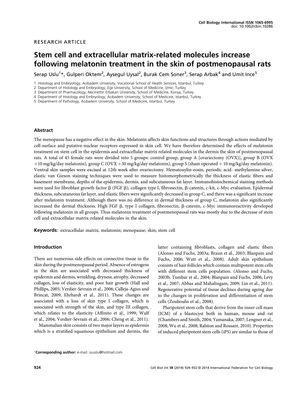Stem Cell and Extracellular Matrix-Related Molecules Increase Following Melatonin Treatment in the Skin of Postmenopausal Rats
April 2014
in “
Cell biology international
”

TLDR Melatonin treatment helps improve skin health in postmenopausal rats.
In a study conducted 10 years ago, researchers investigated the effects of melatonin treatment on the skin of postmenopausal rats. The study involved 45 female rats divided into five groups, including a control group, an ovariectomy (OVX) group, two OVX groups treated with different doses of melatonin (10 mg/kg/day and 30 mg/kg/day), and a sham-operated group treated with melatonin. After 12 weeks, skin samples were analyzed for changes in epidermal thickness, subcutaneous fat layer, and elastic fibers, as well as the presence of various molecules such as fibroblast growth factor β (FGF β), collagen type I, fibronectin, β-catenin, and c-Myc. The results showed that melatonin treatment significantly increased epidermal thickness, subcutaneous fat layer, and elastic fibers, as well as the immunoreactivity of FGF β, type I collagen, fibronectin, β-catenin, and c-Myc. These findings suggest that melatonin treatment can counteract the decrease in stem cell and extracellular matrix-related molecules in the skin of postmenopausal rats.










